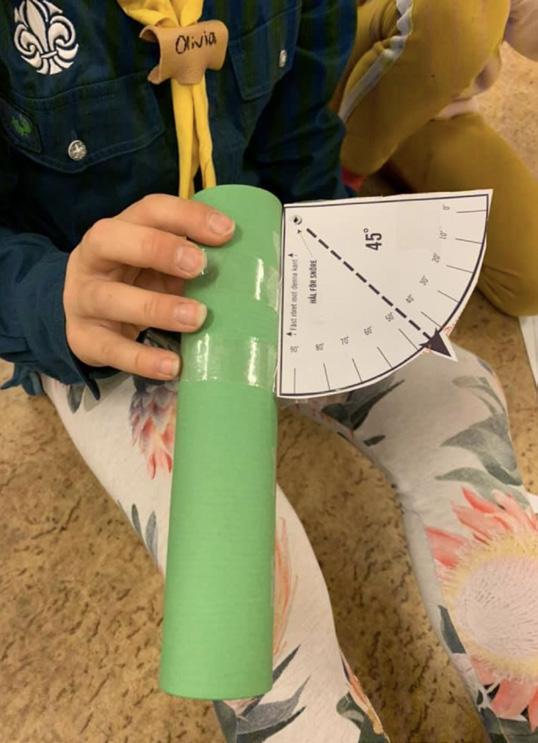7. If you can’t see the sky in one of the directions (i.e. if a house, wall, or a tree is in the way) simply leave the box empty. Make a note of why a direction has not been recorded. 8. Write zero (0) if you can see the sky but do not observe any stars. 9. Fill in information about the weather, the moon phase, the diameter and length of the tube in millimeters (mm), as well as the date and time of the observation in the app. 10. Allow your mobile to access your location. Check that the observation is in the right place on the map. Participants could report their observations directly in the app when they were outside or choose to record their observations on paper and submit them via a web page on a computer. On the Star-Spotting Experiment’s website were instructions, video clips, background material, a protractor template and a data collection template to print out on paper. https://forskarfredag.se/ star-spotting
Image 11. Observations were made at a 45-degree angle in different compass directions. Illustration: Hanna Mellin/VA
Based on the number of stars each participant could see, a calculation was then made of how many visible stars were in the entire night sky at that particular time at that particular location. The more stars you could count through the tube, the more visible stars in the sky in total. The app did the calculation automatically and the participant was immediately informed how light-polluted it was at that location. A detailed explanation of how the calculations were made can be found below. N
S
V
NV
N
NÖ
SV
S
SÖ
Ö
HOW THE CALCULATIONS WORK This is how the Star-Spotting Experiment app calculates how many visible stars there are in the whole sky at the time the observation is made: When we have counted the number of stars in (a maximum of ) nine different directions, the number of stars seen in each direction are labelled N1, N2 … up to N9. The average number of stars (Navg) is calculated using the formula: Navg = (NI + N2 + ... +N9) / 9.
12









